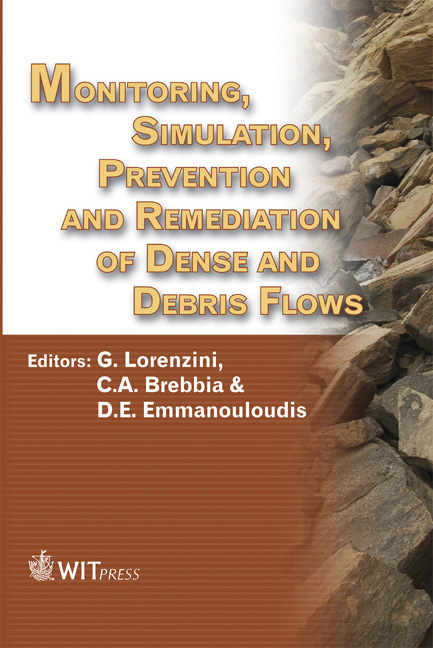The Cause And Mechanism Of Gouras Stream Mudflow In Epirus (W. Greece)
Price
Free (open access)
Transaction
Volume
90
Pages
15
Published
2006
Size
1,373 kb
Paper DOI
10.2495/DEB060201
Copyright
WIT Press
Author(s)
P. Stefanidis & D. Myronidis
Abstract
In the current study, the investigation of the torrential potential of the \“Gouras” stream in the region of Epirus (W. Greece) showed that this is affected by four basic torrential factors: climate, rocks, relief and vegetation. Conditions of mudflow are determined by the torrential potential. In other words, big mean slope of watershed, large quantities of debris, erosive geological layers, intense relief, heavy rainfalls, numerous places which produced sediment yield etc appear in its environment, something that derives also from the presence of a great landslide in the upper part of its watershed. Finally, the research of the mechanism and movement conditions of the concrete mudflow ends with the presentation of the appropriate management system and the relevant technical works that should be applied. Keywords: torrential phenomena, landslides, mudflow, management system. 1 Introduction Hydrology distinguishes the water currents into four categories: big rivers, rivers, torrential rivers and torrents. Torrents are characterized by the following properties: −Sudden and intensive floods of small duration appear in the winter, while there are small or no supplies during the rest of the year −Debris materials (especially gravel matters) are extracted, transported and deposited in their action zone. Mud streams are torrents of mountainous areas characterized by an intense and massive transportation (mud flow) of very gravel matters and an irregular water balance.
Keywords
torrential phenomena, landslides, mudflow, management system.





